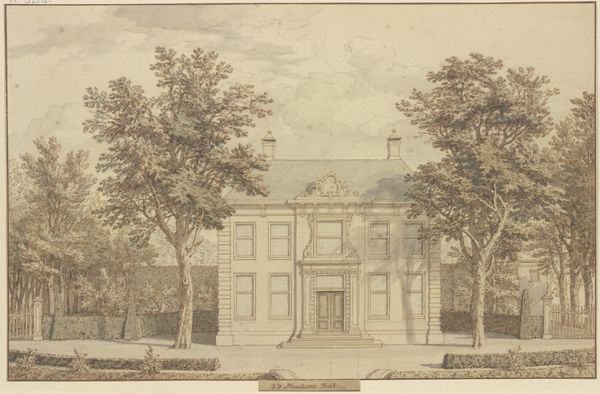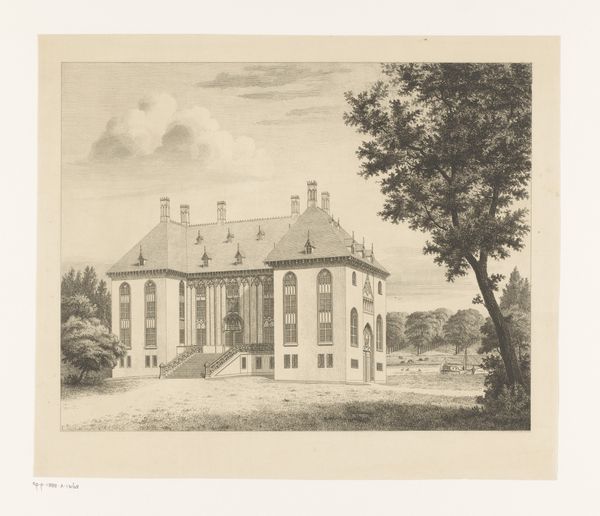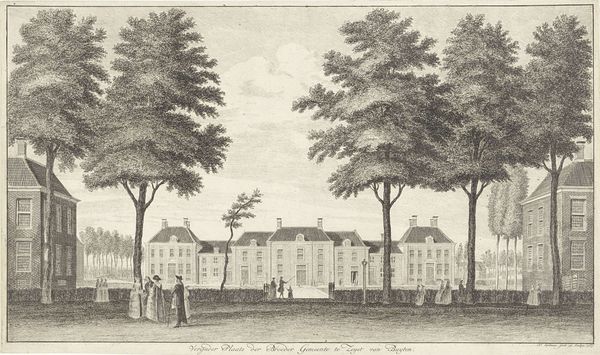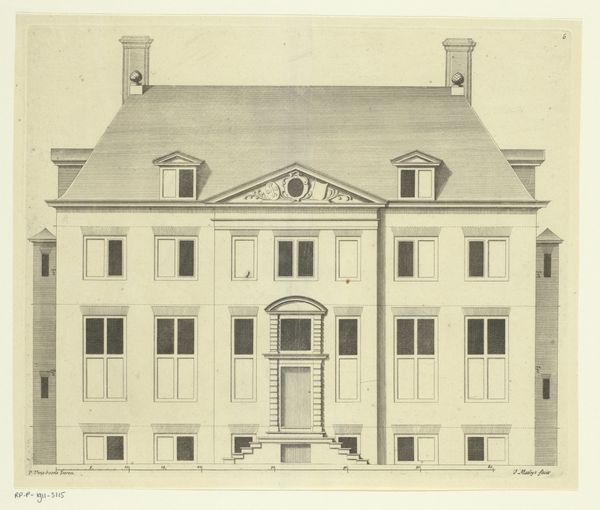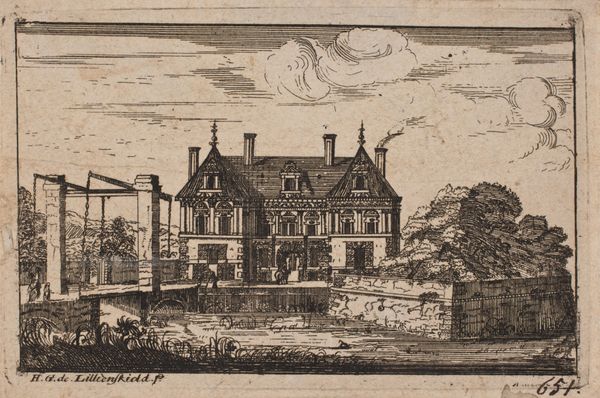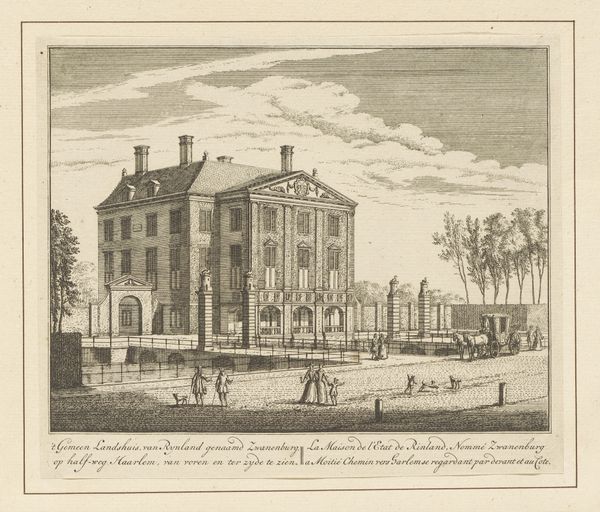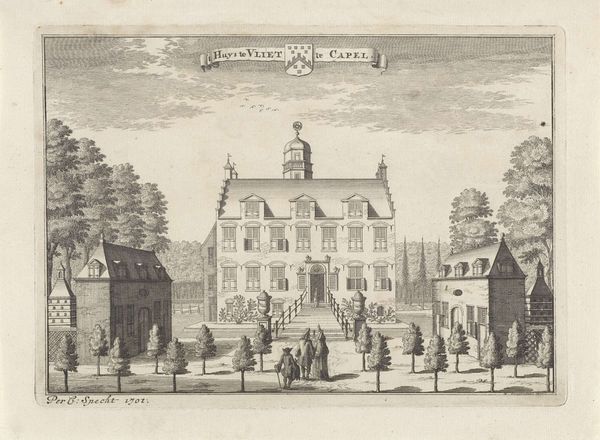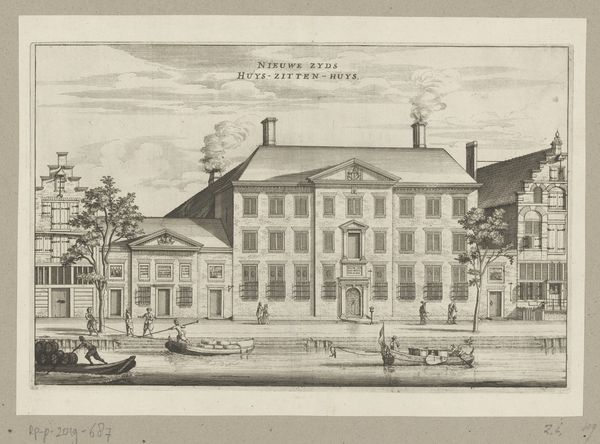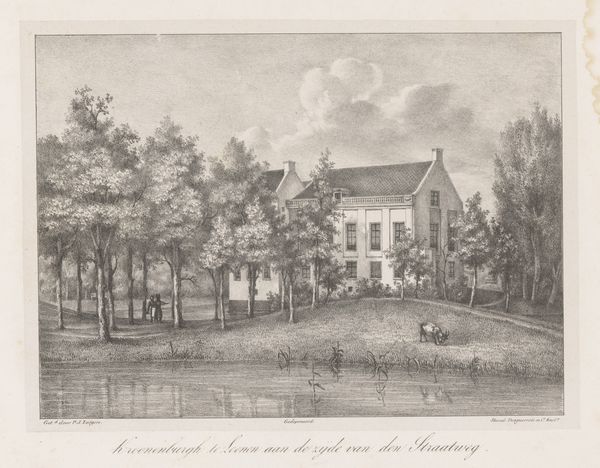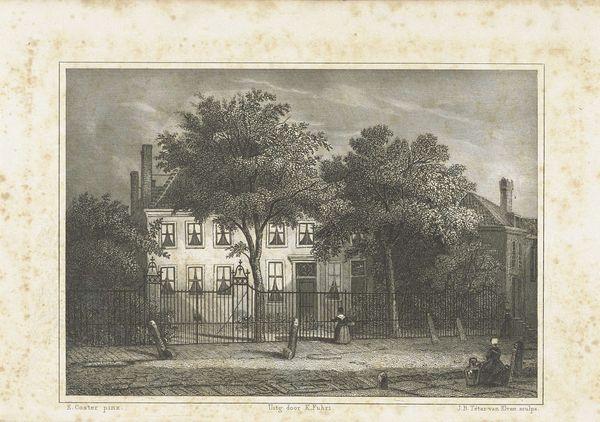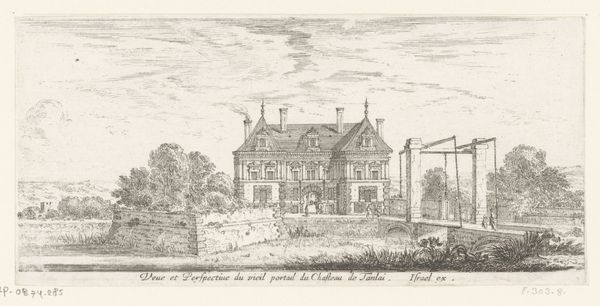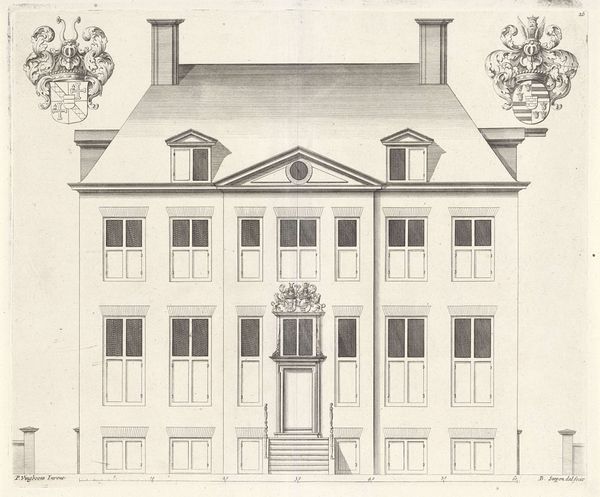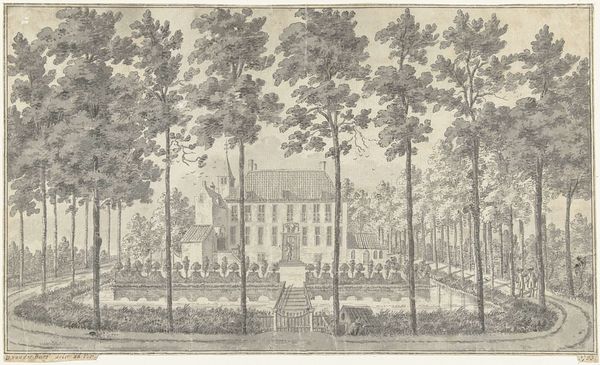
drawing, paper, pencil
#
drawing
#
dutch-golden-age
#
landscape
#
paper
#
geometric
#
pencil
#
cityscape
#
realism
Dimensions: height 305 mm, width 408 mm
Copyright: Rijks Museum: Open Domain
Editor: Anthonie Waterloo's "Hofstede Spruytenburg," a drawing on paper from sometime between 1619 and 1690... it's a really detailed rendering of a house, almost photorealistic, but there's something a little melancholy about it. What stands out to you in this piece? Curator: What strikes me is the tension between the obvious wealth and the almost austere presentation. Think about the social function of art in the Dutch Golden Age. Country estates were potent symbols. Who would commission or buy this, and why render it in a seemingly unembellished way? Editor: Well, maybe to showcase the realism and skill of the artist, without showing off too much wealth? To sort of downplay it? Curator: Perhaps. Consider how Dutch society, while commercially driven, also valued restraint, particularly within certain Calvinist circles. The artist here documents, as much as embellishes. This piece reflects a specific cultural code, showcasing prosperity while adhering to norms of modesty and piety. It makes you wonder about the sitter, their motivations and position within their society. The very act of choosing such an image reinforced that standing. What do you make of that? Editor: So the act of commissioning this was a statement in itself? It wasn't just about having a pretty picture. Curator: Exactly. It subtly, but very deliberately, communicated status and adherence to a specific social order. Think of the image of "home" in the rapidly urbanising 17th century Netherlands. It’s a statement about rootedness. Editor: It makes me see beyond the simple beauty. I hadn't thought about what the choice of this house as a subject would have communicated to others at the time. Curator: Precisely. Art offers such powerful insight into social structures, the cultural underpinnings of history.
Comments
No comments
Be the first to comment and join the conversation on the ultimate creative platform.
